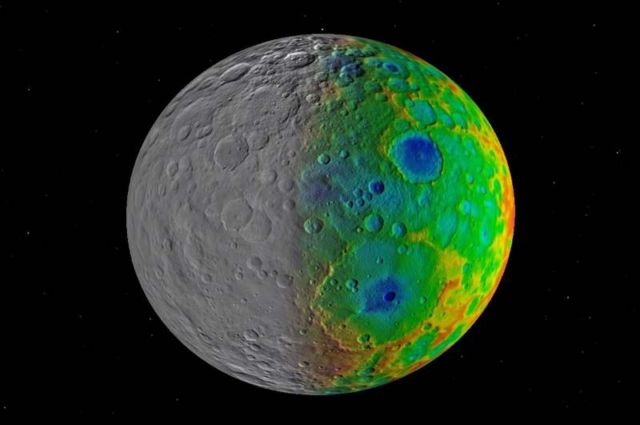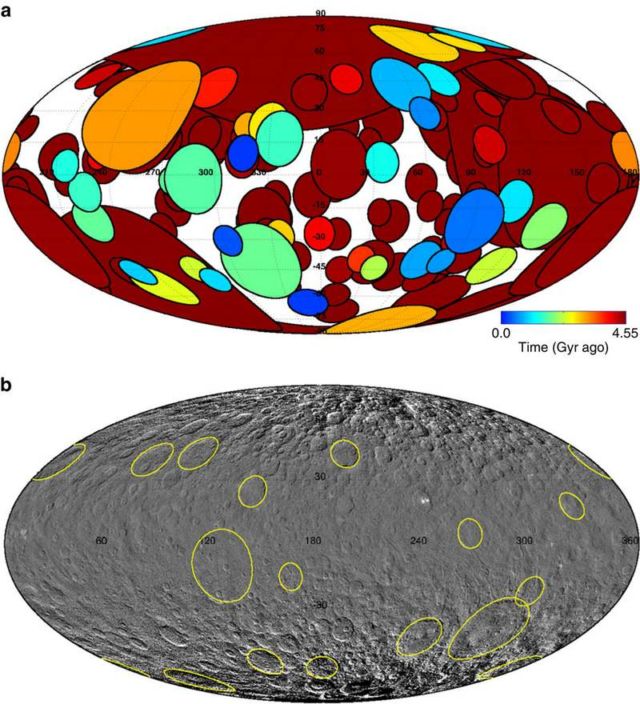A new puzzle to scientists: Ceres‘ lack of giant impact basins.
Scientists with NASA’s Dawn mission were surprised to find that Ceres has no clear signs of truly giant impact basins. They expected to observe more large craters on the dwarf planet than have been found by NASA’s Dawn mission.
The above image shows both visible (left) and topographic (right) mapping data from Dawn. Credit: NASA/JPL-Caltech/SwRI
Researchers are investigating a variety of processes that might have caused the appearance of the largest basins to be softened or erased over time.
Simulated and observed large craters on Ceres. (a) Mollweide projection of all impact craters >100 km (~170) expected to have formed since 4.55 Gyr ago. The picture shows a representative Monte Carlo simulation for our nominal model (see text). Colour code provides epoch of formation. The implementation of the Monte Carlo code follows a recent work. The simulations track all the collisions with impactors >2 km, but here only the large ones are shown. While old craters are obliterated by subsequent cratering, empirical saturation shows that some 40 craters >100 km should be retained. (b) Mollweide projection of a Ceres global mosaic showing observed 16 confirmed craters >100 km (yellow lines).
source dawn.jpl.nasa







Leave A Comment